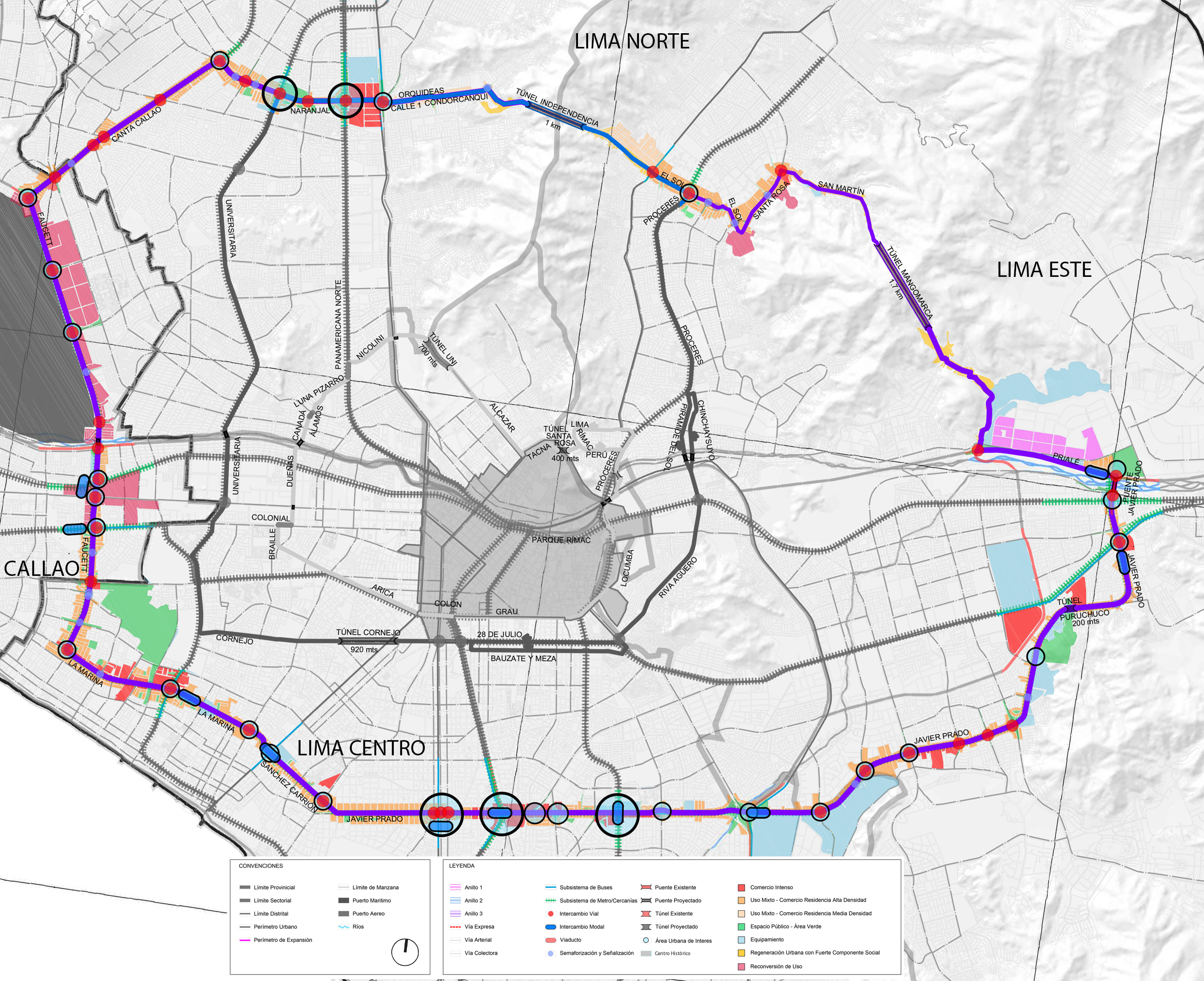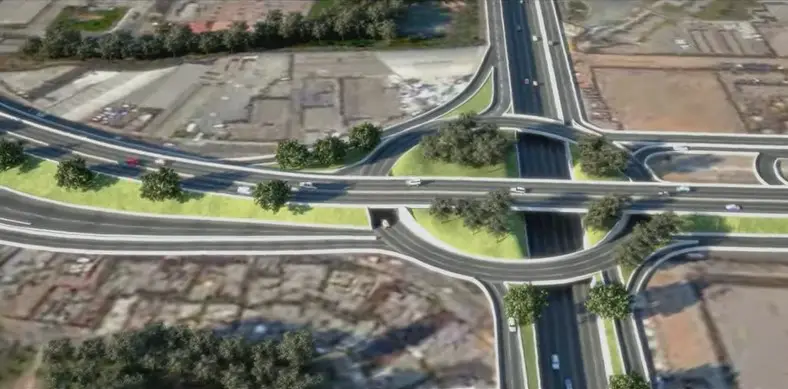The Lima Peripheral Road Ring which is also known as Lima Anillo Vial Periférico is a close to 35 kilometers ring road under development in the metropolitan area of Lima, the capital of Peru in South America, starting at the current Elmer Faucett Avenue and up to the Circunvalación Avenue.
Also Read: Colombia, South America: Metro De Bogotá Project Timeline and All You Need To Know
Divided into three phases, the over US$ 2bn project involves the construction of an urban expressway designed for a minimum speed of 80 km / h with 3 lanes each of which will be 3.6 meters wide in each direction. The expressway also includes a total of 35 overpasses and 17 road interchanges, toll-free roads to connect local traffic, as well as two twin 4 kilometers tunnels in Lomas de Amancaes and Mangomarca.
The 1st phase of the project, dubbed “peripheral road north” will cover 8.7 kilometers beginning at the intersection of Av. Elmer Faucett with Av. Canta Callao, through Naranjal where an intersection that will be an oval overpass will be built, to Av. Universitaria, Av. Las Palmeras, Autopista Panamericana Norte, Av. Túpac Amaru.
From the Comas District, this section will continue to José Gabriel Condorcanqui, Ollantaytambo, and Huanacaure avenues through the Huanacaure Tunnel which is approximate 1 kilometer long connecting Comas with San Juan de Lurigancho.

The 2nd phase (peripheral road center) is 15.1 kilometers long beginning at the exit of the Huanacaure tunnel through Próceres de la Independencia avenues, January 13, and Santa Rosa de Lima to El Sol Tunnel at the height of the Penal de Lurigancho, while the last phase, (11 kilometers peripheral road south) starts at Ramiro Priale Highway, through El Rosal de Santa Anita Avenue, July 22 Avenue, Industrial Separator Avenue to Circunvalación Avenue in the San Luis District.
The mega project is being overseen by the Ministry of Transport and Communications of Peru and the Metropolitan Municipality of Lima.
Expectations for the Lima Periférico Ring Road/Anillo Vial Periférico Project
Upon completion, Lima Periférico Ring Road/Anillo Vial Periférico will be the main element for the logistics development of the Port of Callao that handles approximately 85% of the entire national cargo, and the ordering of cargo transportation between the entry and exit routes of Lima with the logistics centers i.e. airports, ports and the wholesale market of Santa Anita.
The road will also contribute to the reduction of the existing traffic congestion in the main avenues to the north and east of Lima and Callao, generating a saving of 50 thousand hours a day in traffic jams.

Lima Periférico Ring Road/Anillo Vial Periférico Project timeline
2013
The Lima Periférico Ring Road/Anillo Vial Periférico Project was presented in February 2013 as a private initiative co-financed by Cintra (Cintra Infraestructuras), currently one of the largest private developers of transport infrastructure in the world, and JJC, a Peruvian business group specializing in diversified and integrated engineering and construction services, infrastructure concessions and property development.
2015
In February, ProInversion (Agency for the Promotion of Private Investment), a specialized technical body, attached to the Ministry of Economy and Finance (MEF), with legal status under public law, technical, functional, administrative, economic, and financial autonomy, agreed to the draft Ring Road Periferico de Lima.
2016
The Declaration of Viability by the MEF was publicized in December 2016, so as to continue processing the IPC.
2017
In June 2017, the Cintra-JJC consortium was reconstituted, leaving Cintra as the sole proponent.
2020
By February 2020, the project continued in the ProInversión office with the actual construction phase of the project particularly the northern peripheral, planned to begin in 2023 and culminate in 2025.

Leave a Reply